FYI if you're on a device that won't load Flash, there's a player here.
Lio, "Le Banana Split." Ba-na-na-na, ba-na-na-na. Apparently this song was a hit in Europe in 1979. There's a pretty good video for it but the only copy of it on YouTube begins with an ad so I didn't want to embed it. By "pretty good" I mean that another blogger who saw it as a 14-year old boy fondly recalls that "[r]ight after the song ended I suddenly had to run upstairs to my room." Put on your vintage European banana hammock and watch here.
Smell the top banana! I can't understand why so few other bloggers are
using Google's scratch-and-sniff technology. I feel it really adds something.
The latest banana music is produced using actual bananas. BBC News reports that MIT students Jay Silver and Eric Rosenbaum have released a kit called MakeyMakey that can turn any object that conducts electricity into a keyboard. Naturally cats have been early adopters of this technology ("[a]n animal-rights group contacted by the BBC did not express concerns"), but at present we are focused on bananas. Here is Stanford grad student Beau Silver rehearsing for the first public performance of his bananamaphone:
If you're interested in making your own bananoog or bananatar or just a basic bananapiano, he's generously shared info and links on YouTube here. I think this is an excellent use for bananas because taste-wise most of them are disappointing. I do like a good banana — remember the banana salsa? — but the ones we get here in the U.S. are mostly all the same, and they're flavorless compared to the bananas people elsewhere on the planet are eating. I discovered this when I was studying in India as a college student. After completing my work there I did a period of independent study in Nepal with a handful of other students, and rather than fly into Kathmandu we chartered a little bus. Roadside restaurants were few and far between so we ate an awful lot of bananas along the way. Nearly every time we pulled over for a stop, whether to eat or pee or wait for the driver to fix our grubby bus, someone would hand us bananas, excellent, creamy bananas full of flavor, bananas that made me wonder why the bananas at home were such crap. Other people have wondered about this too, and if you're curious about the reasons for it I recommend this article by Dan Koeppel in Saveur. (The short answer is that the vast majority of bananas destined for the American market are the Cavendish variety, a hybrid favored more for its disease-resistant properties than its taste). There's an interesting list of select banana varieties that goes with the article but good luck finding them at your local grocery store. Related additional reading: "Spaces of Banana Control" at Edible Geographies, which explains how NYC bananas are ripened. I've been keeping an eye out for good-looking bananas for a couple months now and the only ones I see regularly are the red ones and the little baby ones. I tend to buy my usual bananas at Commodities because they always have organic ones and I think they taste marginally better than non-organic. I think it's time for me to start going on banana-hunting expeditions to Latino and South Asian neighborhoods to see if anything more interesting has turned up in the two years since the Saveur article was published.
In the meantime here's a recipe for kitchen sink banana muffins. (In addition to bananas they've got carrots and candied ginger in them, and can probably happily handle whatever complementary ingredients you'd like to add). It's based on Mark Bittman's recipe for whole wheat muffins from the Feb. 5, 2010 New York Times.
I feel like I get the best banana flavor in baked stuff if the bananas are frozen first. Specifically, if I wait until they're good and ripe — meaning quite brown and black on the outside, full-on ugly in the way that prissy banana-eaters seem to have a problem with — and freeze them then. They're even uglier when I pull them out of the freezer and I just don't care.
2 1/2 cups whole wheat pastry flour
2 teaspoons baking powder
1/4 teaspoon baking soda
1/2 teaspoon fine sea salt
1/4 to 1/2 cup sugar, depending on taste (I like a lesser amount)
1/4 cup maple syrup, preferably Grade B (it has a stronger flavor)
2 regular bananas, or more to taste (see above), mashed with a fork
1 heaping cup shredded carrots
1/2 cup finely chopped candied ginger
1/2 cup melted butter, plus a bit more for greasing your muffin pan if needed [ the original recipe calls for unsalted butter but I use salted for pretty much everything these days ]
1 egg, beaten
1/2 cup buttermilk
for optional but recommended crunchy topping:
1/4 cup oat or barley flakes
1/4 cup sunflower seeds
2 teaspoons melted butter
2 teaspoons honey
pinch of fine sea salt
Heat the oven to 375°F and grease your muffin pan with butter if necessary. (I use a silicone pan so I don't bother with this step). Mix the dry ingredients together in a large bowl until just combined. Stir in the bananas, carrots, and everything else until ingredients are thoroughly combined. Don't over-stir because supposedly that's bad for muffins.
If you're making the optional crunchy topping, stir all the ingredients for that together in a small bowl.
Fill your muffin pans and spoon a half-tablespoon or so of the crunchy mixture on top of each muffin before baking. Bake for approximately 25 minutes, or until a toothpick poked in the center of your test-muffin comes comes out clean.
Makes at least a dozen muffins, possibly more depending on the size of your pan. (I use a "mini" muffin pan that isn't very mini at all and I got seventeen).
In the meantime here's a recipe for kitchen sink banana muffins. (In addition to bananas they've got carrots and candied ginger in them, and can probably happily handle whatever complementary ingredients you'd like to add). It's based on Mark Bittman's recipe for whole wheat muffins from the Feb. 5, 2010 New York Times.
I feel like I get the best banana flavor in baked stuff if the bananas are frozen first. Specifically, if I wait until they're good and ripe — meaning quite brown and black on the outside, full-on ugly in the way that prissy banana-eaters seem to have a problem with — and freeze them then. They're even uglier when I pull them out of the freezer and I just don't care.
Cuter bananas in syrup form, €12 at Colette.
The original recipe calls for 1 cup of mashed fruit but I don't think there's any need to actually measure it for something like this. I used two ordinary bananas and two little bananas because that's what my banana stash contains, but if you just have two ordinary bananas I'm sure that's fine. Three might be pushing it in terms of fruit content but I feel like that would probably be fine too. (I've made these muffins with various spontaneous combinations of fruit and have never had a problem yet, though my pumpkin-blackberry ones were a bit too dense for my liking).
kitchen sink banana muffins
2 teaspoons baking powder
1/4 teaspoon baking soda
1/2 teaspoon fine sea salt
1/4 to 1/2 cup sugar, depending on taste (I like a lesser amount)
1/4 cup maple syrup, preferably Grade B (it has a stronger flavor)
2 regular bananas, or more to taste (see above), mashed with a fork
1 heaping cup shredded carrots
1/2 cup finely chopped candied ginger
1/2 cup melted butter, plus a bit more for greasing your muffin pan if needed [ the original recipe calls for unsalted butter but I use salted for pretty much everything these days ]
1 egg, beaten
1/2 cup buttermilk
for optional but recommended crunchy topping:
1/4 cup oat or barley flakes
1/4 cup sunflower seeds
2 teaspoons melted butter
2 teaspoons honey
pinch of fine sea salt
Heat the oven to 375°F and grease your muffin pan with butter if necessary. (I use a silicone pan so I don't bother with this step). Mix the dry ingredients together in a large bowl until just combined. Stir in the bananas, carrots, and everything else until ingredients are thoroughly combined. Don't over-stir because supposedly that's bad for muffins.
If you're making the optional crunchy topping, stir all the ingredients for that together in a small bowl.
Fill your muffin pans and spoon a half-tablespoon or so of the crunchy mixture on top of each muffin before baking. Bake for approximately 25 minutes, or until a toothpick poked in the center of your test-muffin comes comes out clean.
alternatively, just eat the crunchy mixture with a spoon
Makes at least a dozen muffins, possibly more depending on the size of your pan. (I use a "mini" muffin pan that isn't very mini at all and I got seventeen).
meiji bananas, coming soon in Japanese Candy Quarterly Review


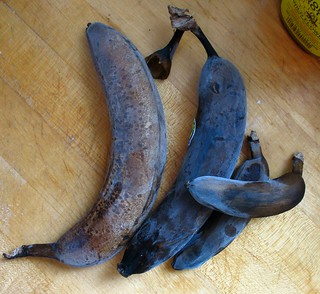

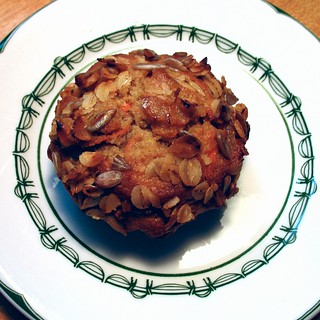

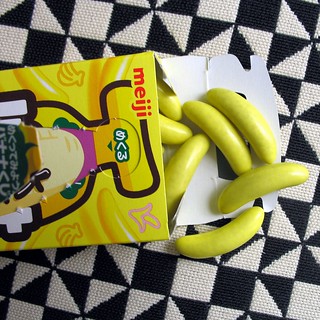


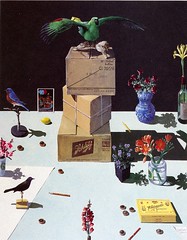
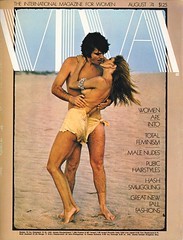
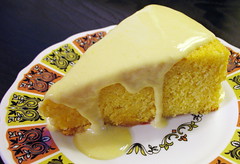
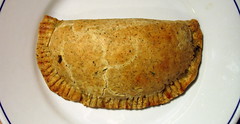

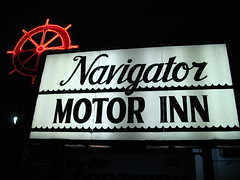
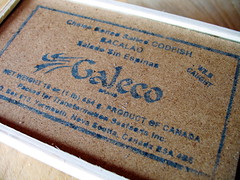

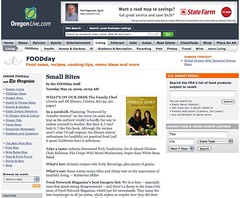
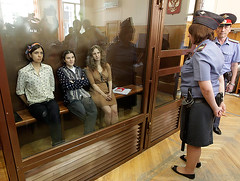

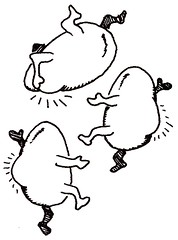
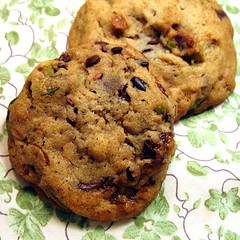

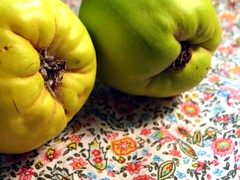
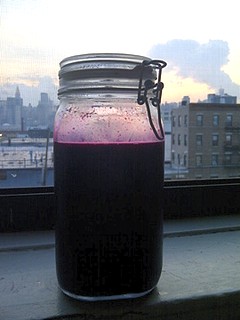
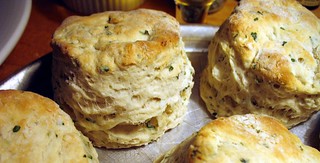
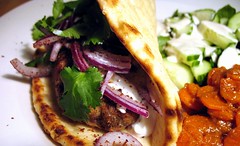
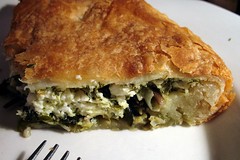


No comments:
Post a Comment